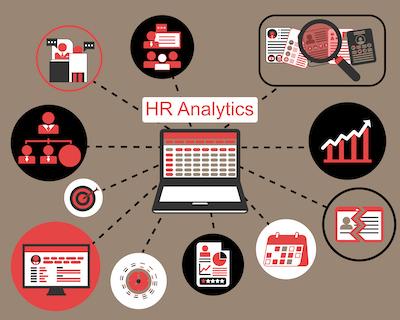Human resources (HR) generates tons of data covering the entire employee lifecycle and experience within organizations. However, when it comes to strategic decision making, HR has traditionally relied more on intuition and experience rather than data-driven insights. With pressures mounting to demonstrate strategic impact, HR now has a timely opportunity to leverage data analytics for more informed choices on critical people decisions.
Adopting a metrics-driven approach can transform key HR functions like acquisition, development, compensation planning, and retention initiatives. This article examines the growing imperative for analytics, types of HR metrics to track, and how derived insights can feed data modeling to enhance predictive decisions across the talent management spectrum. Dive deeper into the world of HR analytics and metrics on https://www.hrfuture.net, where you’ll find valuable resources to drive data-driven decision-making in talent management.
The Growing Need for HR Analytics
In increasingly dynamic markets, business decisions based on gut feel or retrospective yearly data alone are proving inadequate. HR with its birds-eye view of the organizational talent landscape is uniquely positioned to provide relevant people insights that fuel superior decisions. Investments in HR analytics and metric benchmarking provide the foundation.
Metric capture and analysis reveals workforce patterns, measures outcomes and quantifies the impact of HR initiatives. Descriptive analytics answers what is happening and diagnostic analysis explores why it is happening. This evolves further into predictive analytics – data modelling to forecast future talent scenarios and prescriptive analytics – data-backed recommendations for optimal decision-making.
As workforce composition and dynamics get more complex, metric vigils and analytics adoption becomes critical for HR to have a seat at the strategy table.
HR Metrics and Data Points to Track
While traditional HR metrics like cost per hire, attrition rates and engagement scores remain relevant, the opportunities to track more niche data now exist.
Tools capturing employee lifecycle data from pre-onboarding to exit provide rich analytics potential covering:
- Hiring: Source and channel of hire data, selection/screening ratios, quality of hire, compensation variance from offer letters
- Development: Training hours per employee, competency development rates, career movement trajectories, talent mobility/rotation
- Retention: Exit interview insights, participation rates in well-being programs, promotion rates of high potentials
- Culture: Pulse survey feedback, eNPS trends and comparisons, participation in ERGs/communities
Advanced technologies like AI and People Analytics platforms allow sophisticated metrics capture across workforce segments concerning performance, potential and behavioral competencies.
Analytics Driving Key HR Decisions
While metrics provide the critical base, the real value for business impact comes from analytics built on top of the data foundation. HR can enormously elevate the quality of talent decisions by modelling data captured from metrics tracking.
Some examples include:
Informed Compensation Decisions: Compensation data modelling provides market competitiveness insights for appropriate salary benchmarking. Predictive analysis identifies competencies and qualifications driving top performer salary variance. This enables fact-based compensation planning.
Data-driven Learning Priorities: Training needs analysis uses performance data, skill assessments and goal achievement rates to uncover precise individual and organizational learning priorities. Aligned skill-building elevates overall talent capability.
Enhanced Talent Identification: Algorithms assessing achievement patterns, strengths, learning agility and leadership behaviors provide unbiased inputs to identify high-potential employees early. Focused investment in verified top talent enhances succession pipelines.
Optimized Recruitment Channels: Identifying best channels concerning outreach, applications, shortlists, offers accepted and retention time frames provides recruiters proven sourcing strategies. Investment per hire and outcome ratios determine channel mix optimization.
Proactive Retention Schemes: Analytics identifying causes of attrition, at-risk segments, predictors of flight risk allows customizing targeted retention schemes from compensation reviews, growth opportunities to workplace policies preventing turnover.
Elevating HR’s Strategic Impact with Analytics
For HR to elevate its strategic influence as a value creator and revenue driver, analytics adoption is vital. Descriptive metrics quantify the impact of HR programs, reducing guesswork for business leaders. Diagnostic analytics provides root cause insights to refine policies and initiatives. Predictive analytics and data models forecast future scenarios for superior planning. Ultimately, analytics uncovers the vital people insights HR always possessed but could not reveal through basic metrics before.
Conclusion
To meet the opportunities and challenges of modern workforce dynamics, HR can no longer rest on status quo practices. Proactive investments in metrics, analytics and modelling capabilities now can vastly optimize talent decisions in the short and long term. From recruitment, capability development, retention, culture building to overall experience enhancement – analytics allows HR decisions to be timed, targeted and tailored for maximum business impact. The era of making strategic calls based purely on intuition is now over. Numbers, algorithms and objective insights will override all else gradually. HR’s priorities must reflect this new data-fueled reality.



